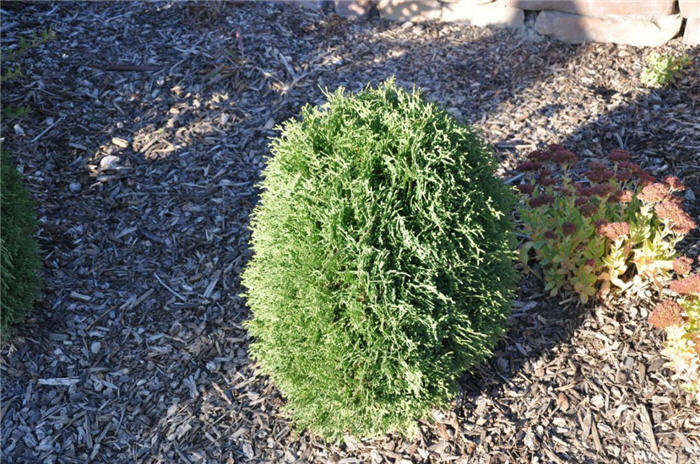| Botanical Name: Thuja occidentalis 'Hetz Midget' | |
| Common Name: Hetz Midget Arborvitae |

-
Anatomy
-
Culture
-
Design
Plant Type
Conifer, Shrub
Height Range
1-3', 3-6'
Flower Color
n/a
Flower Season
n/a
Leaf Color
Green, Blue Green
Bark Color
Brown
Fruit Color
n/a
Fruit Season
n/a
Sun
Full, Half
Water
Medium
Growth Rate
Slow
Soil Type
Clay, Loam
Soil Condition
Average, Rich, Well-drained, Moist
Soil pH
Neutral, Basic
Adverse Factors
n/a
Design Styles
English Cottage, Formal, Japanese, Mediterranean
Accenting Features
Fall Color, Specimen, Unusual Shape
Seasonal Interest
Winter, Spring, Summer, Fall
Location Uses
Entry, Perennial Border, Shrub Border, Foundation, Patio, Walls / Fences, Walkways
Special Uses
Hedge, Small Spaces
Attracts Wildlife
n/a
Information by: Stephanie Duer
Photographer:
Photographer:
-
Description
-
Notes
Although the species is a native American coniferous evergreen tree which grows 40 to 60 feet tall, 'Hetz Midget' is a slow-growing, globe-shaped, dwarf cultivar that typically matures to only 3 to 4 feet tall and 4 to 5 feet wide. Blue-green foliage is scale-like and appears in flat, fan-shaped clusters. Use in beds and borders to add interest for the winter months, particularly under snow, when all else is bare. Adapts beautifully to wild and rock gardens, and is a problem solver for formal gardens in our dry climate where boxwood and other conifers suffer. Makes a fine container foliage plant for porch, patio and terrace.
Grow in average, medium, well-drained soils in full sun to part shade. Somewhat wide range of soil tolerance, but prefers moist, well-drained clay or sandy-loam soils. Intolerant of dry conditions. Appreciates some light afternoon shade in our hot, dry summer climates. Plants may open up in too much shade, however. Site in locations protected from cold winter winds. Does not require pruning to maintain form.